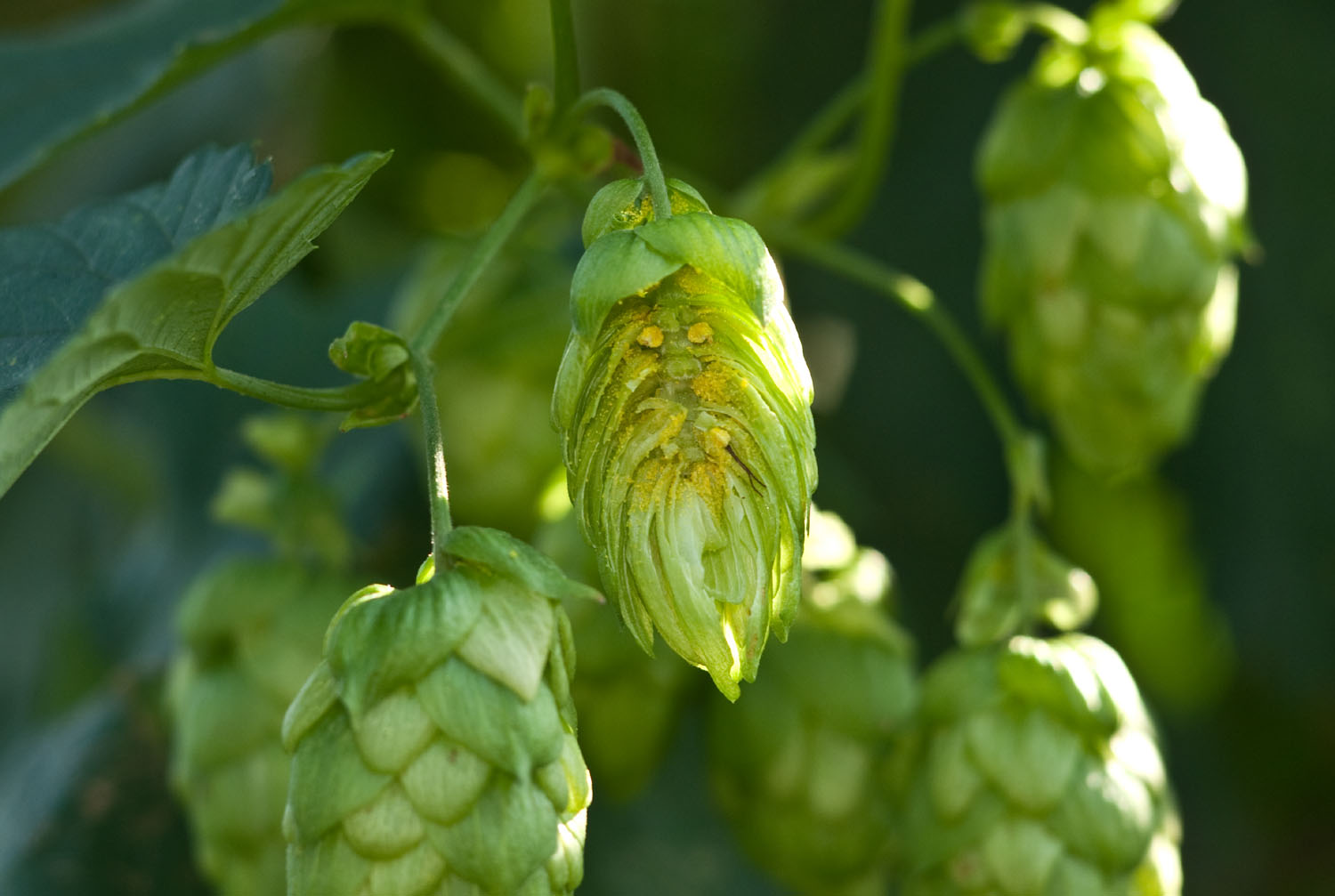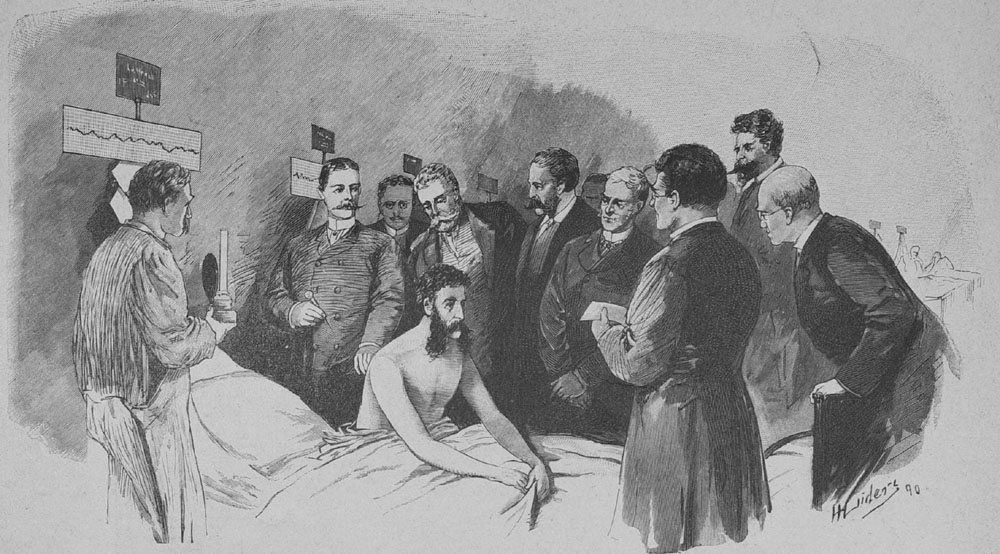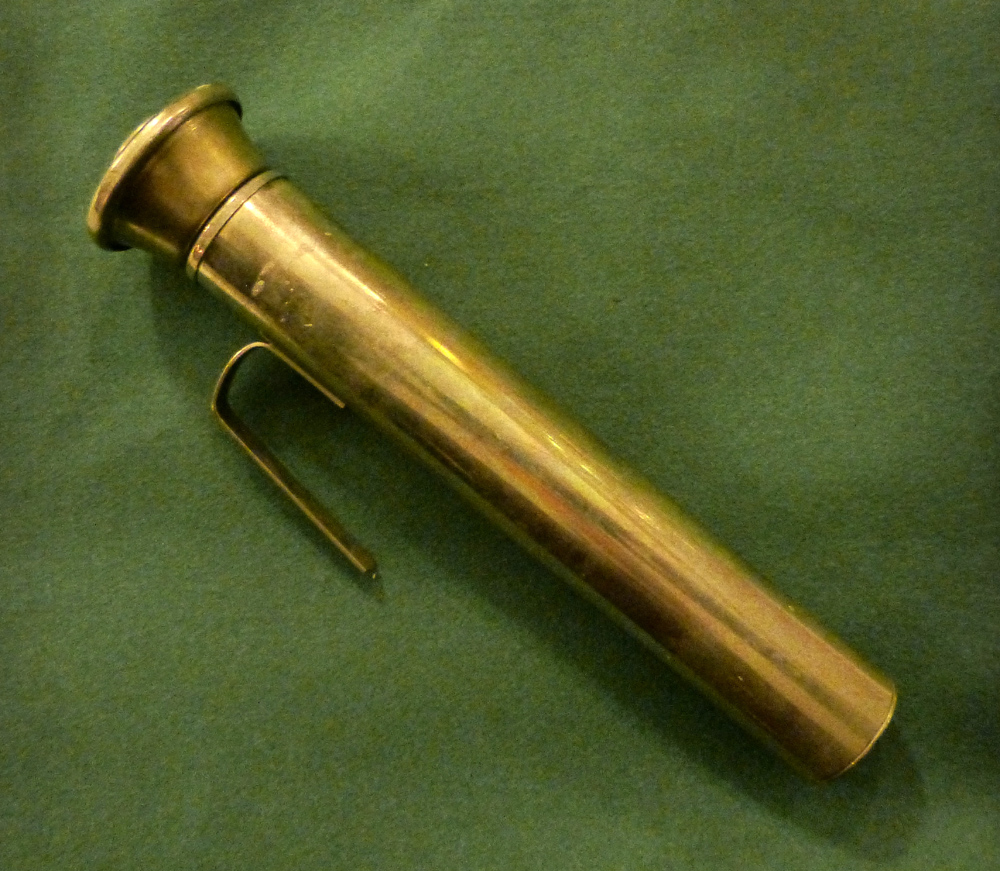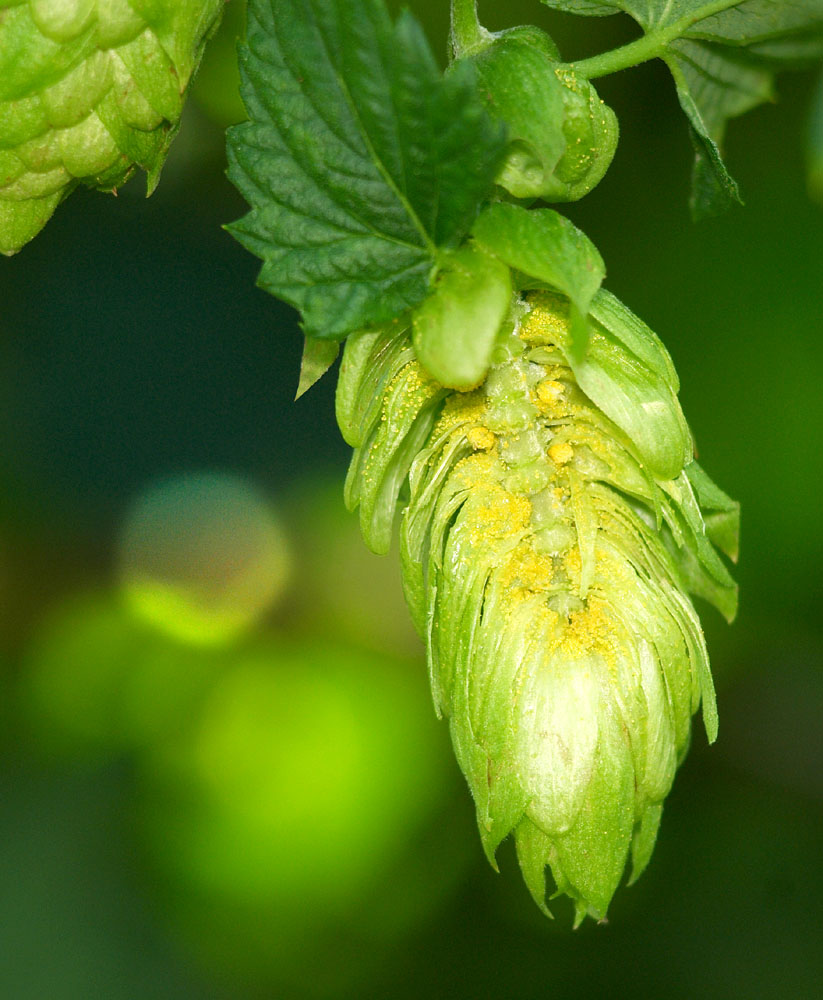
White Death and Green Gold
Hops and the battle against tuberculosis
The extent to which a society perceives a disease as a threat does not depend on statistical data alone. This could be observed very well in the course of the Covid-19 pandemic. The disease that must probably be seen most strongly as a social phenomenon was and is tuberculosis.
It is one of the deadliest infectious diseases of all time. In principle, the pathogen can affect all organs, but the most common form is pulmonary tuberculosis. It is not uncommon for the disease to take years to develop. The ancient Greeks called the disease “phtisis”, a “wasting away”, a term that remained in medical literature for a long time. “Consumption” is probably as old as mankind itself; at any rate, its traces can be traced back a long way, although the rather general terms indicate that it is not always clear whether the sources always meant the same thing. The methods used to cure them are just as old, even if the approaches were rarely too scientific. For example, the method of laying on of hands by the respective king or queen, which became known in England as the “royal touch”, was particularly popular. After all, the rulers were anointed by God, which was supposed to help in any case.
From the 18th century onwards, the method was a little more on this side, although not necessarily more promising. During this period, the “white death” became an aesthetic affliction, a “romantic fever”. The pale expression of the often young victims developed into an ideal of beauty. Pale, ethereal beauties with an absent gaze were the models for painters, embodiments of a morality of untouchedness and tenderness directed towards the afterlife. In the Alps, mountain villages such as Davos were transformed into fashionable climatic health resorts, in whose sanatoriums, also known as “cough castles”, short-suffering patients booked exclusive long-term stays. Masterfully immortalized in Thomas Mann’s famous novel “The Magic Mountain”.
Gradually, however, tuberculosis developed into a problem for the poorer classes. Cramped living conditions among the “common people” meant that around 1880, every second death between the ages of 15 and 40 in Germany was a tuberculosis patient. This was the latest point at which the romantic glorification came to an end. The fight against consumption became one of the most urgent tasks of public welfare. Hop merchant Wilhelm Gerngros, a Nuremberg native who lived in one of the disease’s strongholds, played a key role in the construction of the Engelthal lung sanatorium south of the then hop center of Hersbruck and was even awarded the Golden Citizens’ Medal in 1913 for his services in the fight against tuberculosis. However, he did not realize that his commodity, hops, could hold the key to solving the problem. Even though Max Hayduck at the Berlin Institute for Fermentation had already proven the antiseptic effect of hop bittering agents beyond doubt for the first time in 1885, no one built a bridge to the camp of the tuberculosis fighters.

A vaccination by Robert Koch at the Charité in Berlin in the presence of foreign doctors. From: Die Gartenlaube, 1891, H. 1. p. 14
Not even when Robert Koch achieved a milestone in 1882 and was finally able to identify the cause of the white plague: Mycobacterium tuberculosis. He was awarded the Nobel Prize for Medicine in 1905. Koch won less laurels with his “Tuberkulin” remedy, which after initial enthusiasm turned out to be completely ineffective and even harmful to health.
Hops are said to have been used as a remedy for tuberculosis in the Middle Ages. However, there is no evidence for this, at least none of a conclusive nature. The matter only became more concrete after the First World War. The story began with a gentleman named Rudolf Lang, who had a doctorate in law and lived in Thuringia. He had already suffered from pulmonary tuberculosis in the 1920s, was considered cured, but suffered a relapse in 1937. Suddenly, “one day all the symptoms of the disease (…) had completely disappeared; however, everything returned the next day, albeit with reduced intensity (…) An examination of the food and drink (…) revealed only a glass of warm beer as abnormal.” Having become aware of this, he contacted a nearby lung sanatorium, which then also prescribed warm beer to its patients and also noticed a general improvement in their condition. After Lang also analyzed the case of the Czech farmer Bruj, who had already been widowed twice due to consumption, from which the farmer had always been miraculously spared despite very cramped living conditions, the case was obvious: “The veil of mystery fell when Bruj explained one day that he used to drink up to 30 jugs of beer“. Lang then brewed an elixir called “Edwil” on his own initiative, the ingredients of which he kept secret, but which probably didn’t differ too much from a classic full beer with just under 12% original gravity. Edwil, as a later chronicler noted, “achieved, to put it mildly, surprising results” and was actually able to gain a certain reputation in the fight against tuberculosis. In a memorandum with the telling title “Yeasts : the creators of bactericidal agents of the penicillin type against various pathogens“, Lang revealed what he believed to be the decisive active ingredient. So it was yeast that did it.

Warm beer as an effective remedy against tuberculosis came into focus after the First World War. Source: Wikipedia, author: 1971markus
However, this conviction was not followed everywhere. If only because Lang acted “unencumbered by any expertise“, as one researcher smugly remarked. In 1951, a medical student named Hermann Schmid from Grafing near Munich was given the task by the German Research Institute for Tuberculosis “to find a possible connection between beer consumption and susceptibility to tuberculosis on the basis of statistical material.” In the meantime, pharmaceutical scientists had also become aware of the substances contained in beer. However, the focus was less on yeasts and more on hops.
The decisive impetus came from the USA. Inspired by the Hop Growers’ Association, the US Department of Agriculture commissioned the Western Research Laboratory in Albany, California, to take a closer look at hops in the context of tuberculosis. The first results were obtained in 1949. A team of researchers discovered a significant effect of hop ingredients against Mycobacterium tuberculosis, which was confirmed in several follow-up studies. In the experiments, the number of bacteria was reduced to a quarter of the original level within a very short time. The β-acid lupulone was particularly effective, its efficacy was 10 times higher than that of the α-acid humulone. Where ‘effectiveness’ meant that lupulone inhibited the growth of bacteria, i.e. had a bacteriostatic effect, and was less antiseptic, i.e. killed the pathogens directly. In the course of this research, it was also discovered that there were considerable differences in the effectiveness of the hop ingredients between so-called gram-positive bacteria, which included Lactobacillus, and gram-negative strains.
With this prior knowledge, Schmid set out on the trail. In his search, he concentrated on the brewing industry, “as the people of this profession offered the surest guarantee of not only regular but also plentiful beer consumption“. Sounded logical. Specifically, the surveys were carried out on 1760 people from several Munich breweries. Schmid determined figures of the usual 4-5 liters of beer per person per day. This still causes astonishment, but proved that the research was in the right field. In line with the level of beer consumption, cardiovascular diseases were the most common among brewery employees. Tuberculosis, on the other hand, rarely appeared, regardless of its stage. This is particularly remarkable because figures from many other industries were used for comparison – and there the TB rate was consistently much higher, in some cases six times higher than in the brewing industry. Going beyond the US research, after initial experiments Schmid suspected not only lupulone as the main culprit, but also isohumulone, which is only produced during wort boiling. Subsequent work substantiated Schmid’s thesis. And so a cautiously optimistic statement was made: “Although lupulone cannot (yet) be used as a cure for tuberculosis according to the current state of research (…) there are nevertheless hopes for a possible use of this kind.”
And then – nothing more happened. Perhaps the brewing market took up all the hop capacities again after the war, the ‘Wirtschaftswunder’ finally made people thirsty. The much more likely reason may have been that there were now enough other effective drugs against TB on the market. Drugs such as streptomycin or isoniazid and finally ethambutol from the 1960s onwards, which could be produced synthetically and which presumably also gave the pharmaceutical industry much higher profit margins. In the case of hops, they had probably simply waited too long. Beer-based Edwil also disappeared into oblivion, never to be seen again. Time seemed to have run out.

There is indeed a certain similarity between the lupulin glands of hops and the typical granulomas of tuberculosis. However, a tradition of fighting tuberculosis with hops cannot be deduced from this. Photo: Paul Ehrenreich/German Hop Museum Wolnzach.
For the time being. In 2021, 10.6 million people worldwide suffered from tuberculosis, 1.6 million of whom died. This puts it in 2nd place among the deadliest infectious diseases, surpassed only by Covid-19. The main areas of distribution are India, China, Central Africa, Russia and Southeast Asia. It is considered defeated in Europe. For the moment. This is because more and more of the fatal cases are caused by the multidrug-resistant TB (MDR-TB) variant, for which the existing cures alone are no longer effective. In the search for alternatives, hops are now being rediscovered.
Research teams from China and Iran have come to similar conclusions as their American and German colleagues some 70 years earlier. For the first time, the potential of the hop ingredient xanthohumol in the fight against tuberculosis is also being examined more closely. A research group from Wales is investigating the effectiveness of 50 different hop varieties against Mycobacterium bovis, the causative agent of bovine tuberculosis, which can also be transmitted to humans. However, more than the in-vitro analysis stage has not yet been reached.
It remains to be seen whether hops will finally find their way as a therapeutic agent against one of the worst infectious diseases.
Bibliography:
- Lang, Rudolf (1949): Hefen, die Schöpfer bakterizider Wirkstoffe nach Penicilinart gegen verschiedene Krankheitserreger. Meiningen
- Lewis, J. C. & Alderton, Gordon & Carson, J. F. & Reynolds, D. M. & Maclay, W. D. (1949): Lupulon and Humulon – Antibiotic Constituents of Hops. From the Western Regional Research Laboratory, Albany, Calif.. In: The Journal of clinical investigation, Jg. 28/1949, H.5, 1. S.918
- Chin, Y. C. & Anderson, H. H. & Alderton, G. & Lewis, J. C. (1949): Antituberculous Activity and Toxicity of Lupulon for the Mouse. In: Proceedings of the Society for Experimental Biology and Medicine, Jg. 1949, H.70. S.158-162
- Schmid, Hermann (1951): Statistische Untersuchungen über das Vorkommen der Tuberkulose im Braugewerbe und Vitro-Versuche über die tuberkulosestatische Wirkung einiger Hopfenbitterstoffe. München
- Erdmann, Walter F. (1951): Lupulon und Humulon, ihre antbakterielle Wirksamkeit und Anwendung bei tuberkulösen Infektionen. In: Die Pharmazie, Jg. 6/1951. S.450
- Serkani, J. Esmi & Isfahani, B. Nasr & Safaei, H. Gh. & Kasra Kermanshahi, R. & Asghari, Gh. (2012): Evaluation of the effect of Humulus lupulus alcoholic extract on rifampin-sensitive and resistant isolates of Mycobacterium tuberculosis. In: Research in Pharmaceutical Sciences, Jg. 2012, H.November, 7(4). S.235-242. Behnam Rafiee & Davoud Sadeghi & Sepideh Ghani & Nader Mosavari & Shojaat Dashtipour & Seyed Amir Hosseini (2017): Antibacterial Effect of Aqueous and Ethanolic Extracts of Humulus Lupulus on Mycobacterium tuberculosis. In: Qom University of Medical Sciences journal, Jg. 2017, H.11 (8). S.22-28
- Hai Lou & Fen Zhang & Liqin Lu & Yingying Ding & Xiaohui Hao (2020): Xanthohumol from Humulus lupulus L. potentiates the killing of Mycobacterium tuberculosis and mitigates liver toxicity by the combination of isoniazid in mouse tuberculosis models. In: RSC Advances, Jg. 2020, H.10. S.13223-13231
- Blaxland, James & Thomas, Richard & Baillie, Leslie (2022): The Antibacterial Effect of Humulus lupulus (Hops) against Mycobacterium bovis BCG. A Promising Alternative in the Fight against Bovine Tuberculosis?. In: Beverages, Jg. 2022, H.8, 4